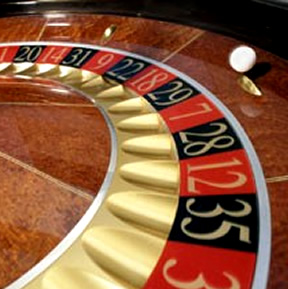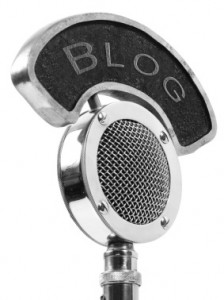The ability of an intrepid inventor to strike it rich from a great idea seems to be embedded in the DNA of many Americans. Perhaps this view emanates from the presence of patents in the US Constitution, which could create a feeling that US citizens have an “inalienable right” to use patent protection to their advantage. Alternatively, people may perceive the occasional media reports of successful inventors and substantial patent litigation awards as a signal that patents can serve as a path to wealth for those with great ideas (certainly, this is the Hollywood view).
In truth, however, getting rich merely from a patent is a rare occurrence–maybe not as low a probability as winning the lottery, but the odds are incredibly long that any person can make money from a patented idea alone. Think about it: if all it took was a patent to make someone wealthy, there would be a heck of a lot more rich people in this country given the huge numbers of patents that are granted by the US Patent Office every year.
There are many reasons why the idea getting rich from patenting an idea is overstated, several of which I have discussed before on this blog. This posting will specifically address why patent litigation as a business model is a non-starter for making most inventors wealthy.
To this end, I was recently contacted by an inventor with several issued and pending patents covering an innovative solution for homeowners. The patents and applications were well-written and, unlike many other patents I have reviewed lately, the innovation was well-covered such that it would be difficult for someone to make the same product without infringing my client’s patents. My client had spent much money over the years on this solid patent coverage, but, due to health issues, he lost his ability to continue working on bringing the product to market. The client believed that infringement was occurring, and he and his patent attorney were under the impression that they would be able to get an investor to fund patent infringement litigation or have an attorney take the lawsuit on a contingency basis.
Like many inventors, my client assumed that he could make money from a patented idea by suing people using his patented idea without permission. However, this is probably the least likely way someone can make a profit from their patent. The average patent litigation lawsuit with from $1 to $25 Million at risk costs each side more than $2.5 Million through trial. Even if the case does not go to trial, it is unlikely that the lawsuit will settle prior to completion of the pre-trial or “discovery” phase where evidence is collected, analyzed and argued in attorney briefs. For cases that go only through this discovery phase, costs are around $1.8 Million. With most patent litigation attorneys costing upwards of $400 an hour, and patent cases generally incorporating several attorneys per side on a regular basis, I have seen patent litigation attorneys bill their clients several $100K per month starting immediately after the case is filed. Thus, even if a case settles relatively early, both sides must expect to incur substantial attorneys fees. Accordingly, patent owners cannot expect to generate any revenue from suing an infringer without significant cash outlays.
Assuming that the defendant’s product infringes my client’s patents and his patents stand up to the inevitable invalidity attack, what could my client expect to obtain if he wins? Notwithstanding large damage awards reported in the press, such as the more than $600 Million ruling against the manufacturer of the BlackBerry(R), most patent damage awards are much lower. Patent damages are awarded on the basis of how much value the defendant is obtaining as a result of its infringing activity. As a result, damages are awarded in large part on the royalty rate the defendant would likely pay my client license to the patent at issue. (Apologies to patent litigation experts on this broad generalization of patent damage calculations, as there certainly is vast and complex case law on how to calculate damage awards. Certainly, much legal effort and cost is spent trying to increase or decrease the damage award in each particular lawsuit. But, at the end of the day, most damage awards likely come down to the reasonable royalty rate in the particular industry in which the patent falls.)
So, let’s now talk about royalty measurements; that is, how much can my client expect from licensing his patent rights? While the rate varies markedly among industries and situations, most royalties are in the relatively modest range of 4-8 % of gross sales (of course, gross sales is a broad measure, but we’re being very generous for the purposes of this discussion). I generated this royalty rate range as a result of many discussions over the years with fellow patent practitioners. For more information on royalty rates, this Wikipedia entry is helpful.
Taking a very conservative patent lawsuit cost of $1 Million, my client would need to obtain $1 Million from the defendant to break even. To obtain this amount, the total gross sales of the infringing product upon which the royalty calculation is made would have to be $25 Million for my client to recover his costs. For an 8 % royalty, the total sales would have to be $12.5 Million to break even. Of course, for my client to make a profit, the gross sales of the infringing product would have to be more. The reader should also note that these hypothetical sales figures ignore sales write downs that reduce the gross sales upon which the royalty amount would be based.
Certainly, there are many products with markets of $25 Million or more. Also, there are many technologies that are used as central aspects in a single product made by many manufacturers. Smart phones are an example of an area where a core technology is used by several manufacturers, so a patent owner in this area could possibly generate mutliple large damage awards, settlements or licensing fees for a single patent. However, most patents cover products that have fairly limited market potential and, as a result, there is a low probability that the patent owner will break even from patent litigation costs, let alone make a profit. This is the case with my client’s patent rights.
For the product covered by my client’s patent rights, total market potential is probably no more than $50 million over the life of the innovation. This is a solid number, and certainly a reason to build a business around the product. However, the current market is small and it will grow only slowly over the next several years. Infringement of his patent rights may be occurring today. Nonetheless, the reality is that, even if my client could afford to bring a patent lawsuit today, the costs of bringing and maintaining the lawsuit far outweigh any financial recovery that my client could obtain by prevailing.
My client cannot fund his own litigation expenses, and was interested in identifying possible alternate sources of funding. Given the real numbers involved in my client’s situation, it would make little sense for a lawyer to take his case on contingency. While the case may be a “winner” in the end, the lawyer would be fronting fees and costs for my client, and he likely would be investing several years in the lawsuit only to share in a relatively modest damage award in the end. It is therefore doubtful that any patent litigation attorney would give my client’s case a second look on a contingency basis.
It is even less likely that my client could obtain an investor to pay the costs of litigation on his behalf. Given the risks involved in patent litigation (see these estimates where the patentee prevails only 25% of the time), as well as the time and cost involved in winning, patent litigation is a poor choice for an investor. So, my client is out of luck in getting someone to fund his patent litigation as an investment vehicle.
In summary, even though my client owns strong patents covering a great innovation that will succeed in the market, it is doubtful that he will ever be able to generate an income by merely enforcing his patent rights. His best hope for earning money from his innovative product is to sell his patents outright to a company that wants to make and sell the covered product. This company will be in a much better position to build the market for the product and would likely be more motivated to police the patent rights in order to keep its competitors at bay.
In other words, by patenting an innovative product, my client obtained the right to prevent others from copying his invention, but not the means to do so. A stark reality, certainly, but a critical thing for inventors to understand.
Today’s post is by Guest Barista Jackie Hutter, Proprietor of the IP Asset Maximizer Blog and Chief IP Strategist at The Hutter Group, LLC, and was first published on the IP Asset Maximizer Blog.



